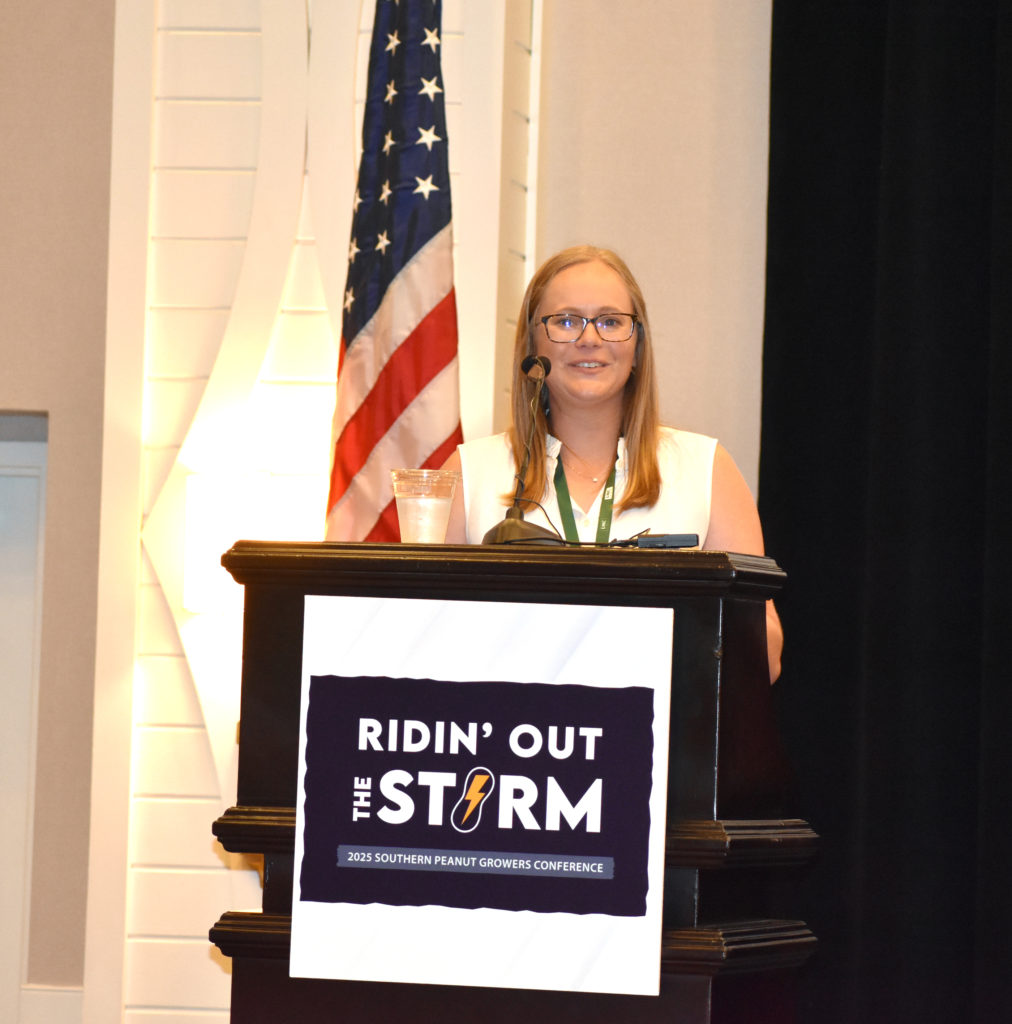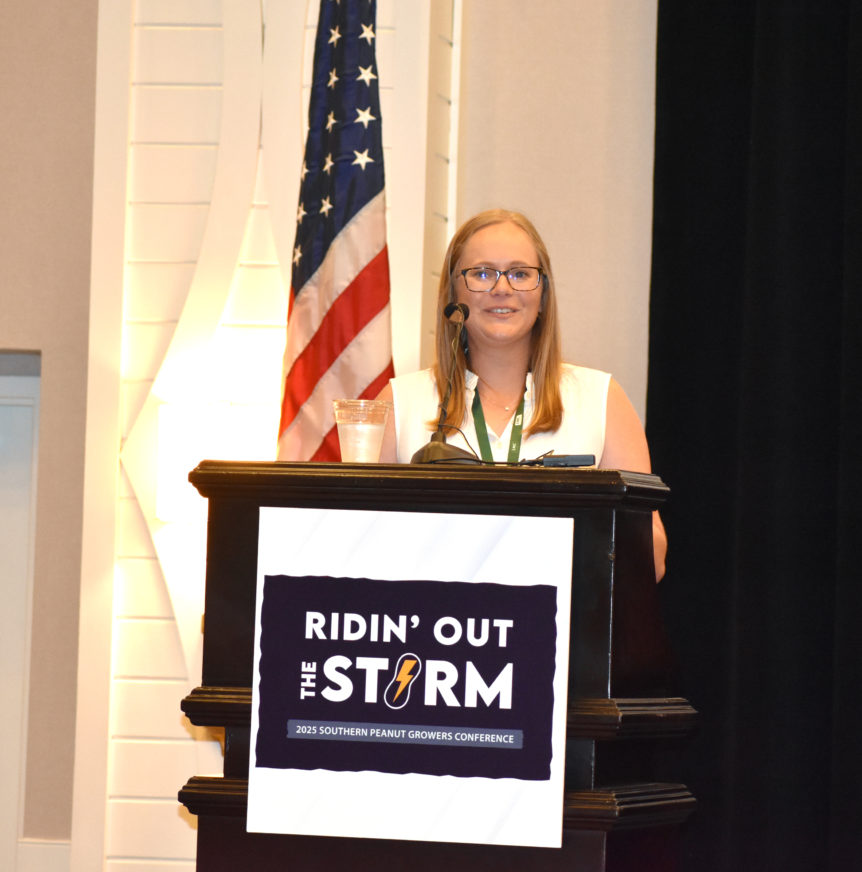By Clint Thompson
The Environmental Protection Agency (EPA) is working to ensure pesticides remain a viable source of protection for farmers and their crops.

That’s the message Taylor Singleton, University of Georgia assistant professor and Extension sustainability specialist, is preaching to growers at county meetings and different crop events, which included last week at the Southern Peanut Growers Conference in Panama City Beach, Florida.
While a few extra steps are required of growers, those steps mean pesticides remain a long-term option.
“The EPA is absolutely doing all that they can to protect the environment and growers’ access to pesticide products by ensuring that moving forward, when a product is registered or re-registered, it is in compliance with the Endangered Species Act (ESA) which is a federal law,” Singleton said. “That’s something that unfortunately hasn’t always been done over the last 50 years. Through this new evaluation framework that’s going to ensure that when a product is moved through the registration or re-registration process, it is compliant with this federal law.
“It has to be ensured that the use of a pesticide product is not going to harm an endangered species or its habitat in any way, along with everything else. We have to make sure the product is safe for the applicator, the consumer and the environment.”
Background
According to the EPA website, growers must understand if the pesticide product they are using has a runoff/erosion mitigation point requirement outlined on the label. If so, they must then select practices off the menu to achieve the required points. When utilizing a tank mix, the product with the highest number of required mitigation points will define the maximum number of points for the application.
The EPA further outlines mitigation relief options available for growers, such as pesticide runoff vulnerability, field slope and sandy soils. It is important that growers not view these new guidelines as tedious but as an essential way to preserve the tools in the toolbox.
Before this action by EPA, Singleton estimated that almost every product was vulnerable to being pulled because of non-compliance.
“There’s a tremendous amount of products that have not had a complete ESA consultation done on them in previous years. That’s a lot of products that are particularly vulnerable if they were to have a problem or end up in the court system,” Singleton said. “With so many products that have previously not been in compliance this framework makes sure that in moving forward that they are fulfilling what they need to fulfill. That’s going to protect growers’ access to pesticide products on the farm.”










